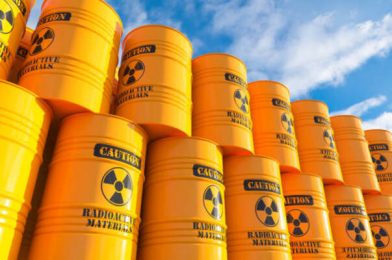
Course Description
This two (2) hour course provides each student with an introduction to the principles, regulations, policies and opinions applicable to the Hazardous Material Transportation Act (HMTA) of 1975. The course discusses in detail the HMTA including the history, purpose and structure of the various regulations put in place by the Act. The overall goal of this course is to provide each student with a general knowledge of what kinds of materials / operations are generally regulated as “hazardous waste”, as well to provide an understanding of the overall purpose and objectives of HMTA regulations; including how they relate to compliance with current federal, state and local environmental regulations. The course also provides an overview of the requirements to safely transport hazardous materials, as well as the regulatory requirements of the Department of Transportation.
How You Will Benefit
- Define “hazardous material” and “hazardous waste”.
- Understand the HMTA Regulations in the Wake of 9-11.
- Identify federal, state, and local regulations pertinent to hazardous waste management.
- Explain major topics covered by HMTA.
- Discuss regulatory impacts on hazardous waste management.
- Recognize that proper hazardous waste management is required by federal and state regulations.
- Determine if waste is hazardous and, if so, in what respect.
- How to maintain proper hazardous waste container and storage requirements.
- Understand the basic requirements for transportation of hazardous wastes including the requirements of DOT and the EPA
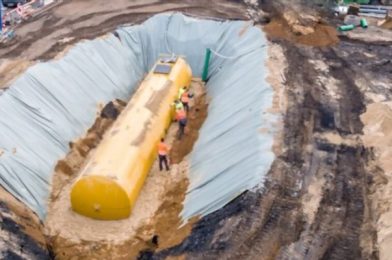
Course Description
This two (2) hour course provides each student with a detailed analysis of the US laws & regulations applicable to Underground Storage Tanks (UST), specifically those regarding USTs with the potential to leak hazardous substances into the environment. This course is designed to familiarize each student with the wide array of regulated USTs, and the technical and financial requirements that apply to them. The course also focuses on petroleum equipment, rules and responsibility of facility, and best management practice in case of leak or release.
How You Will Benefit
- Understanding and defining UST systems.
- Identify which USTs are subject to regulation.
- Determine performance and operating requirements.
- Discuss such topics as historical deadlines for upgrading tanks and the closure and corrective action requirements.
- Summarize the financial responsibility requirements for petroleum USTs.
- Perform Best Management practice.
- Understand the guidelines for Inspecting and Detecting a leak or release

Course Description
This two (2) hour course provides each student with a detailed analysis of the policy, laws and requirements associated with the Endangered Species Act. The course includes an in-depth review of the Endangered Species Act, major rules promulgated under the Act, “on-the-ground” applications, and case studies, all aimed at putting the student in the shoes of policy-makers. The course is intended to be comprehensive in its perspective, looking at policy decisions from the viewpoint of agency personnel, environmental advocates, water and land development managers, and citizens at large.
Learning Objectives
Upon completion of this course, each student will have the capacity to:
- Comprehend key provisions of the Endangered Species Act.
- Identify National conservation policies affecting wildlife.
- Describe how wildlife becomes endangered and list examples of endangered wildlife.
- Understand federal enforcement programs aimed at protecting endangered species.
- Identify the numerous issues landowners and developers face regarding endangered species protection

Course Description
This two (2) hour course provides each student with a detailed overview of the U.S. laws, regulations and compliance requirements associated with the Federal Insecticide, Fungicide and Rodenticide Act (FIFRA). This course is beneficial to those professionals in the chemical, pharmaceutical, cosmetic, food and other consumer products industries, tasked with ensuring full compliance with FIFRA. We will provide you with a review of the federal laws and regulations, as well as a discussion on how these relevant laws and regulations interact with current integrated pesticide management programs, registration requirements, compliance and enforcement. This course also looks at the labeling aspects of the major regulatory requirements, placing a major emphasis on industry standards and best practices.
How You Will Benefit
- Explain the legal framework and scope of the Federal Insecticide, Fungicide and Rodenticide Act (FIFRA).
- Understand relevant statutes affecting the use of biocides & preservatives in general consumer products.
- Comprehend how relevant statutes affect and interact with the federal pesticide programs.
- Analyze the requirements in terms of efficacy, environmental assessment, ecotoxicology and toxicology.
- Identify tools to formulate regulatory compliance strategies.
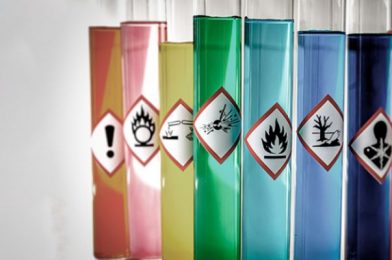
Course Description
This two (2) hour course provides each student with an in depth analysis of the key provisions comprising the Toxic Substance Control Act (TSCA), including requirements for Pre-Manufacture Notification (PMN), testing, and regulation of chemicals; as well as record keeping and reporting requirements. TSCA is a broad-ranging federal environmental statute affecting not only chemical manufacturers but also companies that use, process, distribute, import, and export chemical products across a wide range of industry and operational environments.
Topics of discussion in this course are:
- Sorting Through TSCA Exclusions and Exemptions
- Understanding the PMN Review Process
- Options to Respond to Proposed Regulations for New and Existing Chemicals
- Import Certification and Export Notification
- Inventory Update Reporting (IUR) and 8(e) Reporting
- TSCA regulations for Lead, PCBs, and Asbestos
How You Will Benefit
- Define terminology applicable to the TSCA.
- Identify major laws/regulations regulating the marketing of chemical products and the control of chemicals in the environment.
- Identify agencies/authorities responsible for the enforcement of these laws/regulations.
- Describe the goals and objectives of the specific laws/regulations presented.
- Identify the role that costs, health risks, societal concerns, economical impact and other modifying factors play in the process of regulating chemicals.
- Describe how toxicological data is utilized/required in the chemical regulatory process.
- Identify and access sources (including the internet) providing information on the toxicity and regulation of chemicals.

Course Description
This two (2) hour course provides each student with theories, principles, and approaches to emergency management, and is designed to assist facility owners and/or operators in complying with the reporting requirements of the Emergency Planning and Community Right-To-Know Act (EPCRA), Title III of the Superfund Amendments and Reauthorization Act of 1986, and 42 U.S.C. s. 11001, et seq. (SARA). An analysis of past disasters is presented along with their impacts on policy formation leading up to the current FEMA all-hazards approach. The role, duties, and importance of the Emergency Manager, as well as the legal issues involving emergency management are thoroughly discussed throughout the course.
The information and sources in this course will help each student determine the regulatory status for:
- Emergency Planning Notification and Emergency Response Plans (EPCRA 302/303);
- Emergency Release Notification (EPCRA 304);
- MSDS and Chemical Inventory Reporting (EPCRA 311/312); and
- Toxic Chemical Release Inventory (EPCRA 313)
How You Will Benefit
- Understand comprehensive emergency management philosophy, roles and duties of emergency managers throughout the United States
- Understand the history of EPCRA and its’ current roles in all-hazard management
- Understand notification requirements for emergency releases of hazardous chemicals into the atmosphere, surface water or groundwater.
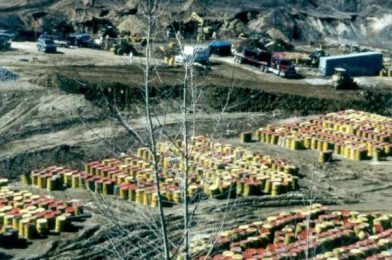
Course Description
CERCLA (Comprehensive Environmental Response, Compensation, and Liability Act) is a law designed to remediate contamination from hazardous waste disposals that may endanger public health and the environment. This two hour course provides students with a basic understanding of many of the major provisions of CERCLA that are currently in place including: release reporting requirements in CERCLA Section 103 and the Emergency Planning and Community Right-To-Know Act of 1986 (EPCRA) sections 302-312. Participants are provided with a basic understanding of CERCLA, and an in-depth review of the Remedial Investigation/ Feasibility Study (RI/FS) process as it applies to DOE’s environmental restoration program. In addition, this course presents the regulatory process governing site assessment and remediation and takes an in-depth look at federal, state and local programs dealing with the regulatory framework, governing Superfund. Topics include: Superfund program; cleanup and abatement orders; release reporting; the National Contingency Plan (NCP); the administrative record; and the hazard ranking system.
How You Will Benefit
- Identify characteristics of the Comprehensive Environmental Response, Compensation, and Liability Act (CERCLA),
- Understand the hazardous terminology, National Priority List (NPL), remedial phase and liability provision.
- Learn about the three types of response activities defined under CERCLA; removal, remedial, and enforcement programs
- Develop a broad conceptual model of the site which includes, but is not limited to, identifying potential exposure concerns, the information necessary for an evaluation, and stakeholders concerns.
- Develop conclusions regarding preventing or reducing exposure; the likelihood of adverse health effects; the degree of public health hazard posed by the site; critical data gaps; and need for health education, exposure investigations.
- Understand the process of CERLA enforcement, and enforcement Audit.
- Understand the key provisions of CERCLA and SARA.
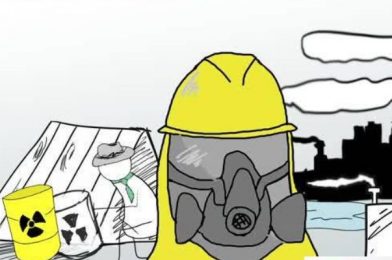
Course Description
This two (2) hour course is designed to provide each student with an overview of the Resource Conservation and Recovery Act (RCRA) as it exists today. This RCRA hazardous waste course addresses regulations important to waste generators including identifying hazardous waste, determining generator status, complying with accumulation requirements, manifesting waste off site, land disposal restrictions treatment standards and special regulations for recyclables, used oil, military munitions, and universal waste. This course also moves further into a discussion on the regulations pertaining to treatment, storage, and disposal facilities such as the permitting process; treatment, storage, and disposal facility standards, as well as RCRA corrective action requirements.
The Hazardous Materials Transportation Act (HMTA) as it applies to the generation, transportation and disposal of hazardous waste is also presented; including RCRA waste classification, land disposal restrictions, generator requirements, manifesting requirements, and DOT requirements such as proper shipping names, packaging, labeling, marking, and placarding.
How You Will Benefit
Upon completion of this course, each student will have the capacity to:
- Fully understand RCRA, including major components and why it is required.
- Understand the relationship between RCRA and the Comprehensive Environmental Response, Compensation, and Liability Act (CERCLA)
- Recognize that proper hazardous waste management is required by federal and state regulations.
- Know the key programs and provisions of RCRA.
- Determine if waste is hazardous and, if so, in what respect.
- Understand the unique characteristics of various waste types.
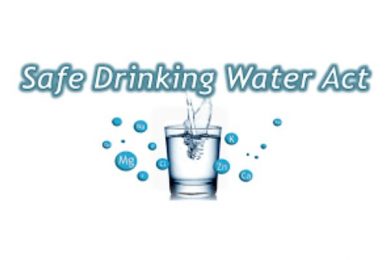
Course Description
This two (2) hour course provides each student with an overview of the major components making up the Safe water Drinking Act (SDWA) as it exists today. This course covers the history of drinking water regulation in the United States prior to SDWA’s enactment, as well as an overview of SDWA’s evolution up to and including the 1996 Amendments. The course begins with the basics of regulatory compliance, including EPA definitions, and moves into the process used to set drinking water standards while discussing in detail the Underground Injection Control Programs and classes of wells.
This course will provide you with an in-depth review of the Public Notification Rule, Consumer Confidence Reports, Total Coli form Rule, Surface Water Treatment Standards, The Disinfection By Product Rules, Lead and Copper Rule, Inorganic Contamination; and Radionuclide’s Contamination. In addition we will provide you with the basic requirements of the Groundwater Rule (including health effects of each contaminate group).
How You Will Benefit
- Understand federal, state, and local laws relating to Safe Drinking Water Act.
- Identify and understand current drinking water standards.
- Demonstrate knowledge of microbiological, organic, inorganic, and toxic contaminants.
- Underground the Injection Control Wells program, including specifications, classes and uses as described by law.
- Demonstrate knowledge of National Secondary Drinking Water Standards, Maximum Contaminant Level, and Maximum Contaminant Level Goals
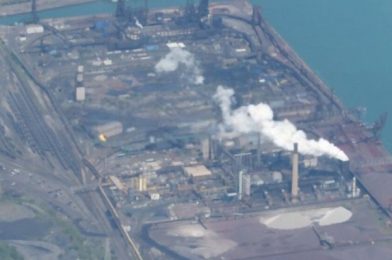
Course Description
This two (2) hour course provides each student with an all encompassing view of the Federal Clean Air Act (CAA). Enacted in 1970, and substantially amended in 1978 and 1990, the CAA was once the esoteric domain of environmental engineers, consultants, lawyers and regulators. Today, the CAA remains one of the key regulatory programs facing facilities and operations throughout the United States, forcing everyday professionals to be knowledgeable of its’ scope and implications.
While emphasizing the CAA Amendments of 1990, the course discusses in detail the history, structure and scope of the CAA; reviewing each major CAA title (as modified by the 1990 Amendments), and describing the legislative components of the CAA with chapters, sub-chapters, sections, subsections, and clauses in an easy to understand format. The course concludes with a discussion on the overall impact the CAA has had on the environment and public health while highlighting the many successes of the Act.
In order to effectively deal with the numerous requirements of the act, environmental professionals (and nowadays, operations and facility managers) must have a basic understanding of the law and how it is enforced.
How You Will Benefit
- Understanding the overall impact and implementation requirements of the Clean Air Act.
- Understanding the history behind the Clean Air Act and Amendments.
- Understand the legislation behind the Clean Air Act and know the prominent provisions of the framework legislation that govern the Clean Air Act.
- Understand how the Clean Air Act affects their facility / operation, including basic requirements for compliance.
- Identify sources of criteria pollutants and their hazards to human health.
- Understand the achievements of the Clean Air Act in improving Air Quality
- Further develop their professional knowledge by undertaking more advanced Clean Air Act courses.










